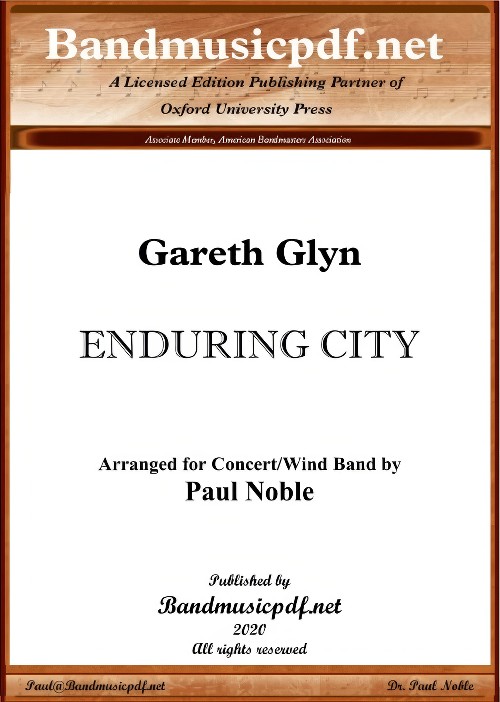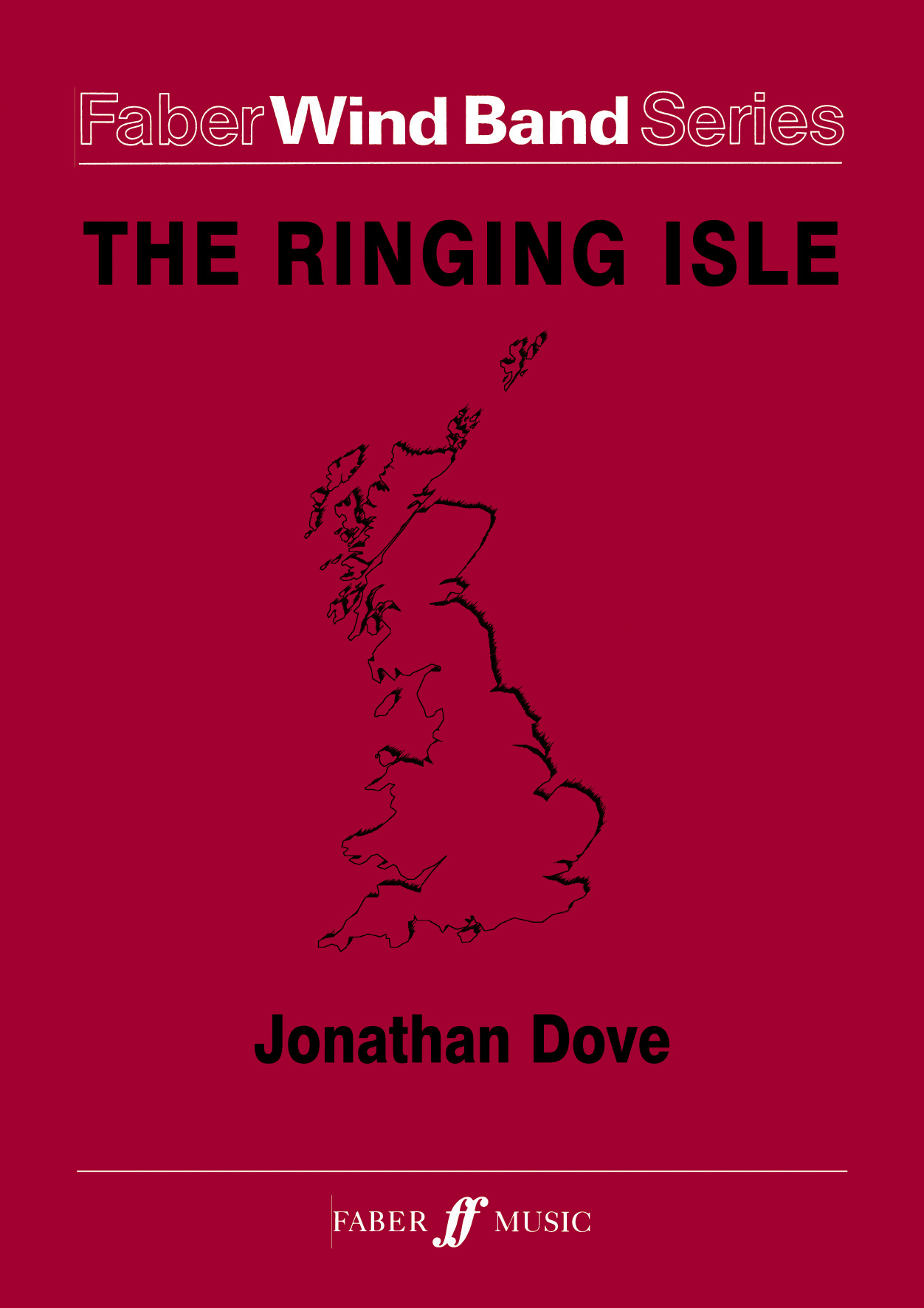Results
-
 £101.70
£101.70Voyage Printanier - Francois Rousselot
Estimated dispatch 7-14 working days
-
£86.40
Mystic Voyage - Chris M. Bernotas
Estimated dispatch 7-14 working days
-
 £58.50
£58.50 -
 £144.99
£144.99Voyage - Satoshi Yagisawa
This opening piece by Japanese composer Satoshi Yagisawa expresses joy, gratitude, hope and courage. The three sections are performed without interruption. We hear 'Joy' in the brilliant introduction, 'Gratitude' in the chorale-like middle section and 'Courage and Hope' in the closing section. A fantastic new addition to the Grade 4 repertoire for Concert Band.
Estimated dispatch 7-14 working days
-
£176.70
Voyage Initiatique - Alexandre Kosmicki
Estimated dispatch 7-14 working days
-
 £244.99
£244.99Journey to the Centre of the Earth - Harrie Janssen
This composition was based on the world-famous novel by the French author Jules Verne. This novel describes the attempt to reach the centre of the earth. The descent of the crater of the volcano called Snaeffels, situated in Iceland, marks thebeginning of this voyage to the sublunary world. The German geologist, professor Lidenbrock, is accompanied on this trip by his nephew Axel and an Icelandic guide named Hans. The last mentioned will be helpful in many occasions. Dark colors & mist The composer tried in this single work to give a musical expression to various significant moments from this novel. In the introduction he sketches an image of the dismal ambience on the island by using dark colors. Risingfragments of mist reveal the flanks of the monumental mountain Scataris. The composer tries to catch this image in a majestic and broad chorale. Away from Iceland Subsequently the ostinato rhythmicity and virtuosity representthe hectic descent of the crater of the volcano. The party descends ever more and more and travels south, away from Iceland. On the way, they see all kinds of rock formations, fossils and minerals. At a depth of thirty hours walking distance, atabout 150 kilometers below the surface, they reach a sub terrestrial sea which is called the Lidenbrock sea. Genuine eruption of sounds Strange electric manifestations and unpredictable weather conditions accompany thissingular phenomenon. An orchestral tutti-episode expresses this impression musically. On a make-shift raft, the party continues its voyage, heading to the south coast of this huge sea. Once ashore, an enormous rock obstructs the passage. The blowingup of this obstacle unleashes a genuine eruption of sounds in the orchestration. Spat out by the volcano But the explosion has an unforeseen side effect. The sea - travelers and raft included - is sucked upwards into a dark hole.Again, our heroes are accompanied on their involuntary voyage, while left to fend for themselves, by an ever increasing ostinato rhythmicity. Before an irruption can destroy the raft, the threesome manages to escape and climb up through acave towards the daylight. They seem to be spat out by the Stromboli volcano on the island of Sicily, far from home. The composition ends with triumphant sounds that represent the scientific triumph of these adventurers.
Estimated dispatch 7-14 working days
-
 £295.00
£295.00Enduring City (Concert Band - Score and Parts) - Glyn, Gareth - Noble, Paul
Enduring City was composed to celebrate the 300th anniversary of the founding of New Bern, the first permanent seat of the colonial government of the state of North Carolina. It was first settled in 1710 by Swiss and German immigrants under the leadership of Christoph von Graffenried and and John Lawson. The 2010 composition was commissioned by the New Bern 300th Anniversary Committee and the City of New Bern, to portray the city in terms of its history, its present and its optimism for the future; the North Carolina Symphony gave its first performances, in venues throughout the state. Its one continuous movement is in well-defined sections. Most of the musical themes derive from names of people and places connected with New Bern, using letters that are also note-names, omitting those which are not. For example, the opening trumpets spell out E-B-E-D for New Bern ('R' standing for Re, which is D in fixed-doh sol-fa notation) and B-C-G for Baron Christoph von Graffenried. They are answered by the orchestra's "John Lawson, Gent.", the name on the cover of the co-founder's A New Voyage to Carolina. Lawson's questing and adventurous character is then suggested, accompanied by a "Carolina" note-name theme; and, after the Graffenried theme on solo horn, the music of both men combines for their voyage, culminating (on trumpets and trombones) in the founding of New Bern. The story of Tryon Palace, central to the city's history, is represented by echoes of the various kinds of music heard at the Governor's residence - fife and drum bands, minuets and the slaves' "Jonkonnu" festivals from Africa, celebratory fanfares and fireworks; the section reaches a climactic ending when all are combined. After a peremptory interruption by the snare drum, the perky fife theme is transformed to portray the conflicts that visited New Bern over the centuries, alternating with a new "grief" theme, which - when sounded by strings alone - leads to music of reconciliation and then of the natural beauty of the city's surroundings. A steady, lively rhythm underpins the final section, confidence - in the present and for the future. Echoes of previous themes are heard, but the closing peroration is reserved for a majestic and joyous statement of the name of New Bern itself.
Estimated dispatch 7-14 working days
-
 £149.99
£149.99Columbus Wind Band Set (Score & Parts)
Christopher Columbus was born in Genoa in 1451. His father was a wool merchant. Originally he seemed destined to follow in his father's footsteps, and thus sailed the oceans to countries as far apart as Iceland and Guinea. In 1476 his ship was sunk during a battle off the coast of Portugal. Columbus saved his own life by swimming to shore. In 1484 he conceived the idea of sailing to the Indies via a westward sea route, but it was only in 1492 that he was able to realize this plan. On this first voyage he was in command of three ships: the flag-ship, called the Santa Maria, the Pinta, and the Ni?a. From Spain Columbus sailed via the Canary Islands to the Bahamas, which he sighted on October 12th 1492. Without being aware of it Columbus discovered the 'New World' - he thought he had landed in the eastern part of Asia. The motif from Dvo??k's 9th Symphony 'Aus der neuen Welt' forms a little counterfeit history at this point in the composition. After this first voyage Columbus was to undertake another three long voyages to America. These voyages were certainly not entirely devoid of misfortune. More than once he was faced with shipwreck, mutiny and the destruction of settlements he had founded. After Columbus had left for Spain from Rio Belen in 1503, he beached his ships on the coast of Jamaica. The crew were marooned there and it was only after a year that Columbus succeeded in saving his men and sailing back to Spain with them. In the music the misunderstanding about which continent Columbus discovered in his lifetime resounds, for does this part in the composition not contain Asiatic motifs? Poor Columbus! In 1506 the famous explorer died in Valladolid. 09:00
Estimated dispatch 7-14 working days
-
 £149.99
£149.99Columbus - Rob Goorhuis
Christopher Columbus was born in Genoa in 1451. His father was a wool merchant. Originally he seemed destined to follow in his father's footsteps, and thus sailed the oceans to countries as far apart as Iceland and Guinea. In 1476 his ship was sunk during a battle off the coast of Portugal. Columbus saved his own life by swimming to shore. In 1484 he conceived the idea of sailing to the Indies via a westward sea route, but it was only in 1492 that he was able to realize this plan. On this first voyage he was in command of three ships: the flag-ship, called the Santa Maria, the Pinta, and the Ni?a. From Spain Columbus sailed via the Canary Islands to the Bahamas, whichhe sighted on October 12th 1492. Without being aware of it Columbus discovered the 'New World' he thought he had landed in the eastern part of Asia. The motif from Dvok's 9th Symphony 'Aus der neuen Welt' forms a little counterfeit history at this point in the composition. After this first voyage Columbus was to undertake another three long voyages to America. These voyages were certainly not entirely devoid of misfortune. More than once he was faced with shipwreck, mutiny and the destruction of settlements he had founded. After Columbus had left for Spain from Rio Belen in 1503, he beached his ships on the coast of Jamaica. The crew were marooned there and it was only after a year that Columbus succeeded in saving his men and sailing back to Spain with them. In the music the misunderstanding about which continent Columbus discovered in his lifetime resounds, for does this part in the composition not contain Asiatic motifs? Poor Columbus! In 1506 the famous explorer died in Valladolid.
Estimated dispatch 7-14 working days
-
£65.00
The Ringing Isle - Jonathan Dove
Handel called Britain 'the ringing isle' because when he moved to London, he heard bells ringing everywhere: great bells in church towers, and handbells in some of the first private houses he visited. The sound of people 'ringing the changes' is a peculiarly British sound of celebration, and it seems a good starting point for a piece celebrating British musical life. Within The Ringing Isle, Dove incorporates some traditional change-ringing patterns, from 'Grandsire Doubles', 'Oxford Treble Bob Minor' and his own version of 'Plain Bob Major'. Handel's phrase also conjures up an image of a magical island, and so this is how Dove envisaged how it must have been to approach Britain from an ocean voyage.
In stock: Estimated delivery 1-3 days

